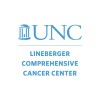
F18 EF5 PET/CT Imaging in Patients With Brain Metastases From Breast Cancer
Brain Metastases From Breast CancerTo estimate the presence of hypoxia in individual lesions after radiotherapy in patients with brain metastases from breast cancer as identified by F18 EF5 PET/CT imaging.

Serratus Anterior Plane Block Versus Paravertebral Block for Postmastectomy Analgesia
Breast CancerAcute PainًًًُُُُThe investigators are testing the efficacy of a new novel technique; serratus anterior plane block, for preventing postoperative pain after breast surgery for cancer. This block will be compared with the well-established paravertebral block.

Phase Ib Trial of Two Folate Binding Protein Peptide Vaccines (E39 and J65) in Breast and Ovarian...
Breast CancerOvarian CancerThis is a single-center, randomized, single-blinded, three-arm phase Ib study of the folate binding protein vaccines E39 and J65. The study target population are patients with breast or ovarian cancer diagnosis who have been treated and are without evidence of disease. Disease-free subjects after standard of care multi-modality therapy will be screened and HLA typed. E39 and J65 are cytotoxic T-lymphocyte-eliciting peptide vaccines that are restricted to HLA-A2+ patients (approximately 50% of the U.S. population).

Chemotherapy for Elderly Patients Diagnosed With Localized HER2 Positive Breast Cancer
Breast CancerHER-2 Positive Breast CancerThere is major concern regarding chemotherapy related toxicity in the group of women older than 65 years old diagnosed with human epidermal growth factor receptor 2 (HER2) positive breast cancer (BC). Nevertheless, these patients are at a particularly high risk of breast cancer recurrence and death. Of note, older patients may experience higher risk for Trastuzumabe related cardiotoxicity, especially when this agent is combined with an anthracycline. Recent studies have shown extremely favourable outcomes in early HER2+ BC patients treated with a combination of paclitaxel and trastuzumab, omitting anthracyclines from treatment. Investigators sought to investigate safety and outcome data on a cohort of elderly patients treated with weekly paclitaxel combined with carboplatin and trastuzumab.

A Study Comparing Pegylated rhG-CSF and rhG-CSF as Support to Breast Cancer Patients Receiving Chemotherapy...
Breast CancerNeutropenia1 moreNeutropenia is one of the most frequent adverse effects of chemotherapy, and the main factor to limit the dosage and the continuation of chemotherapy. A newly pegylated rhG-CSF was independently developed by JIANGSU HENGRUI Medicine Co., Ltd, China. Phase 1a, 1b and phase 2 trials have shown that pegylated rhG-CSF has decreased renal clearance, increased plasma half-life, and prolonged efficacy in compare with rhG-CSF. The purpose of this study is to determine the safety and effectiveness of pegylated rhG-CSF in preventing neutropenia following chemotherapy in patients with breast cancer.

Fluorescein for Sentinel Lymph Node Biopsy (SLNB) in Breast Cancer
Breast CancerThe study goal is to develop a new method of intraoperative lymphatic mapping with fluorescent contrast agents to improve the outcome of therapeutic breast cancer surgery.

Study Of PF-04691502 (PI3K/mTOR Inhibitor) In Combination With Exemestane Compared With Exemestane...
Breast NeoplasmsPF-04691502 is an inhibitor of PI3K and mTOR kinase. Exemestane is an aromatase inhibitor for the treatment of advanced breast cancer in women whose disease has progressed following tamoxifen therapy. The combination of PF-04691502 and exemestane might mitigate resistance to hormonal therapy and result in greater clinical benefit than exemestane alone in women with estrogen receptor positive advanced breast cancer.

Dietary Energy Restriction and Omega-3 Fatty Acids on Mammary Tissue
Breast CancerThe over-reaching goal of this study is to test the merit of combining dietary energy restriction with omega-3 fatty acids as a safe and effective breast cancer chemoprevention strategy in overweight and obese women at high risk.

Ultrasound and Mammography for Screening Breast Cancer in Chinese Women
Breast CancerEarly detection of breast cancer through screening has been a common practice in the United States and several European countries for decades.It is effective in reducing the mortality of breast cancer and improving the postoperative quality of life of patients. Mammography has been the standard imaging method for the screening, and in recent years, a supplemental ultrasound exam is also recommended.A prospective, multi-center, randomized trial is needed to define an optimal screening strategy that suits Chinese women and the socioeconomics of China.

Defining the HER2 Positive (+) Breast Cancer Kinome Response to Trastuzumab, Pertuzumab, Combination...
Breast NeoplasmsKinases are a group of proteins that are important in how cancer cells grow. HER2 is a kind of kinase. This study looks at a new approach to identifying kinases, which may help target therapy more precisely. LCCC1214 is a randomized, multiarm, multicenter, open-label window trial designed to explore the kinome response in Stage I-IV HER2 positive (HER2+) breast cancer patients scheduled to undergo definitive surgery (either lumpectomy, mastectomy or surgical resection of oligometastatic disease). Patients will initiate dosing with either a single HER2-directed agent or a combination of two HER2-directed agents, one week prior to surgery. Forty patients will be randomized to one of four study groups: A) single dose trastuzumab; B) single dose pertuzumab; C) combination single dose trastuzumab plus single dose pertuzumab; or D) combination single dose trastuzumab plus lapatinib daily for 7 days. Pre- and post- dosing tissue will be analyzed for kinome response and resistant signatures. The initiation of study drug will be defined by the surgical schedule; there will be no delays in standard treatment for the purposes of this study.
